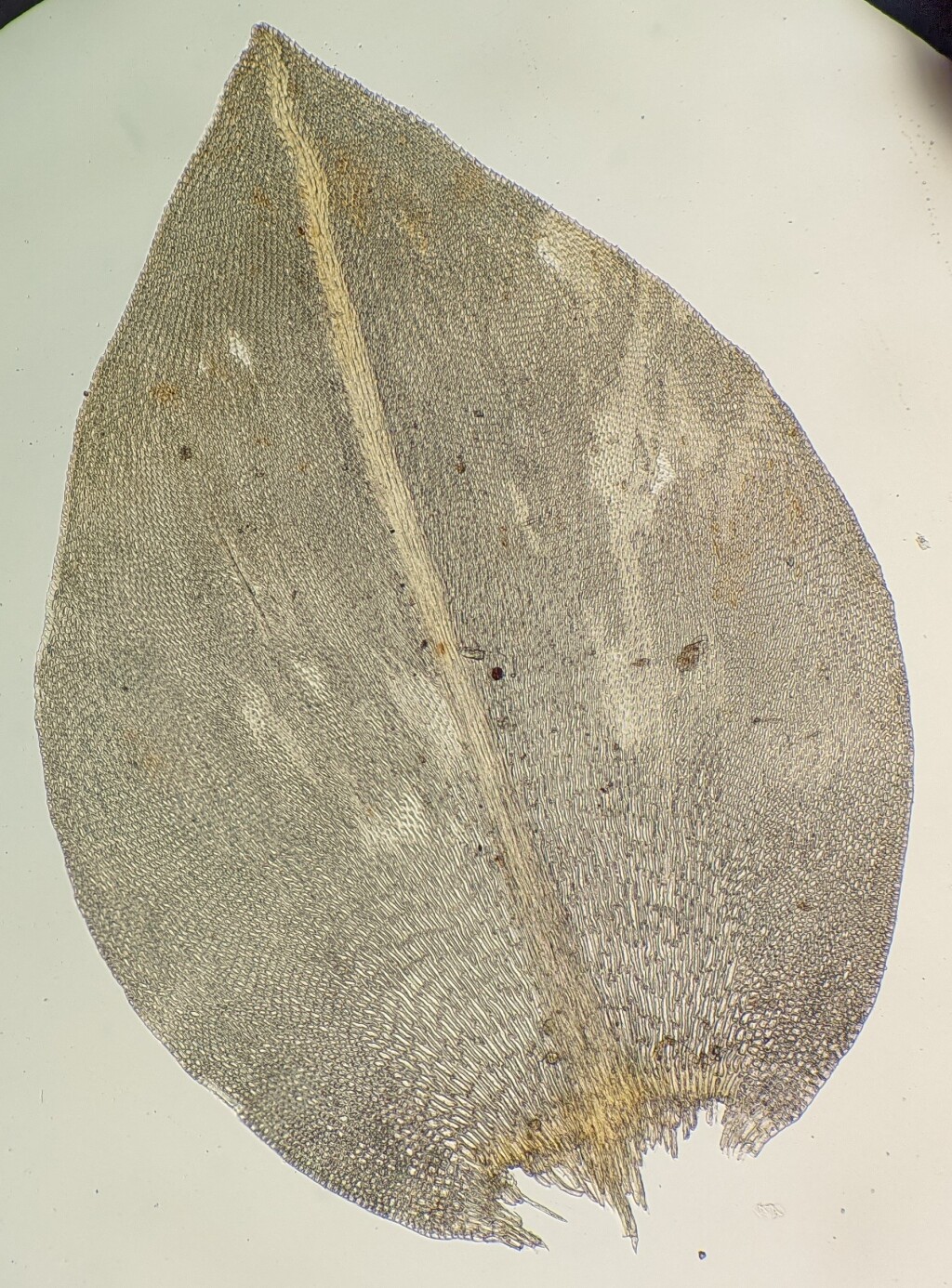Dendrocryphaea
Tufts on rocks, rheophytic. Secondary stems simple to regularly pinnately branched, glabrous. Leaves orbicular or ovate to oblong-ovate, erect to wide-spreading when moist, imbricate and erect to erect-spreading when dry; apex acute or obtuse; costa subpercurrent or percurrent; margins entire to serrulate, plane, with (not in Victoria) or without a border of elongated cells; laminal cells rhomboid or elliptic to hexagonal, with distinctly elevated cell corners, becoming rectangular or linear toward base; alar cells differentiated, slightly enlarged, quadrate to rectangular, occasionally oblate, brownish or hyaline. Perichaetia appearing lateral on stems or terminal on short branches. Capsule immersed, straight, ovoid to obloid or rarely globose, with a deciduous annulus. Calyptra mitrate, scabrous near apex. Operculum conic or rostrate from low base. Peristome double; exostome teeth incurved when dry, erect when wet; endostome segments nearly equal to slightly longer than exostome teeth; cilia absent.
Six species, one from Juan Fernandez Islands, one from Colombia, three from southern South America and one from eastern Australia (Griffin et al. 1982; Enroth 1995).
 Spinning
SpinningEnroth, J. (1995). Taxonomy of Cyptodon, with notes on Dendrocryphaea and selected Australasian species of Cryphaea (Cryphaeaceae, Bryopsida). Fragmenta Floristica et Geobotanica 40: 133–152.
Griffin III, D.; Gradstein, S.R.; Aguirre, J. (1982). Studies on Colombian cryptogams XVII. On a new antipodal element in the neotropical páramos–Dendocryphaea latifolia sp. nov. (Musci). Acta Botanica Neerlandica 31: 175–184.

